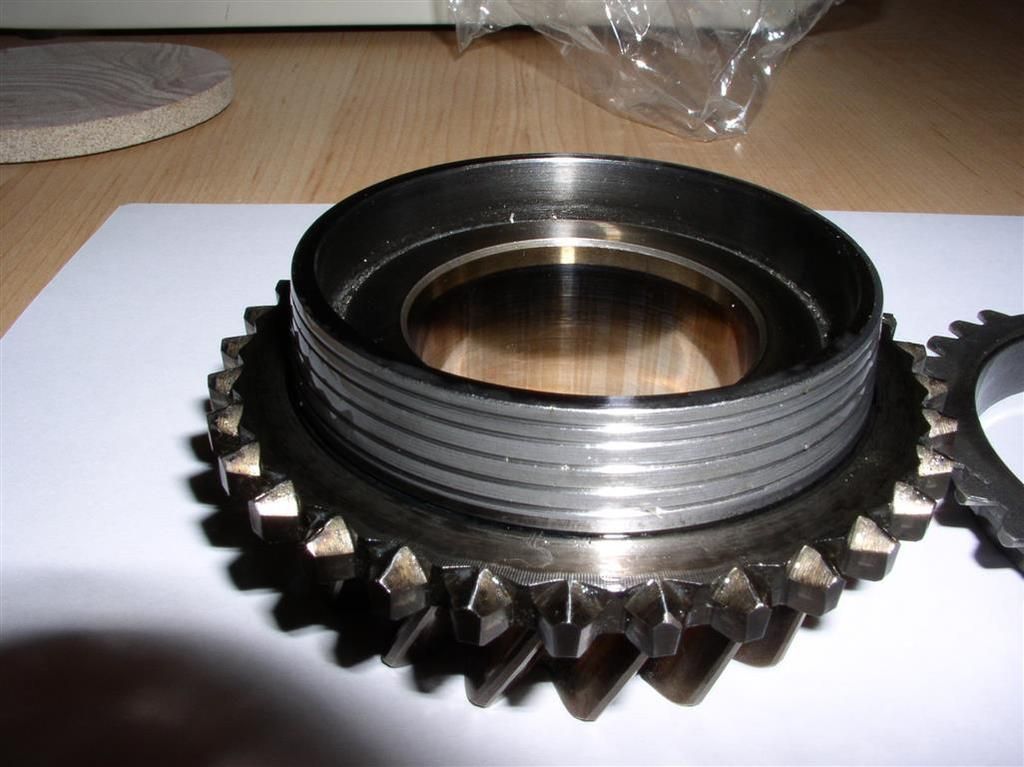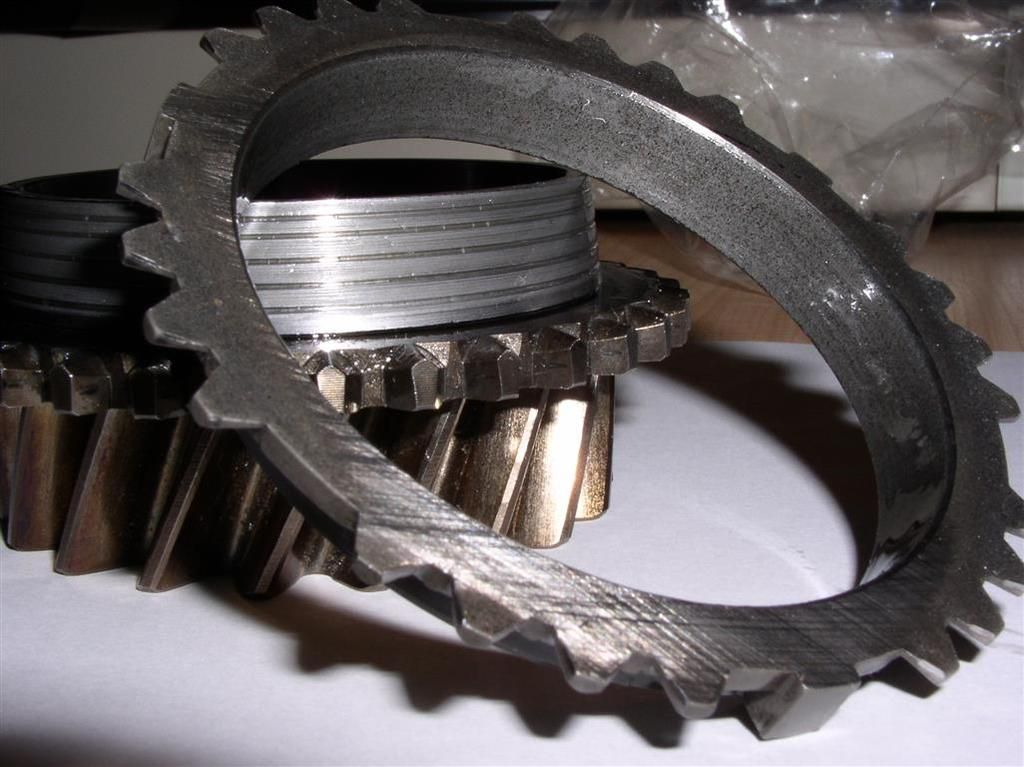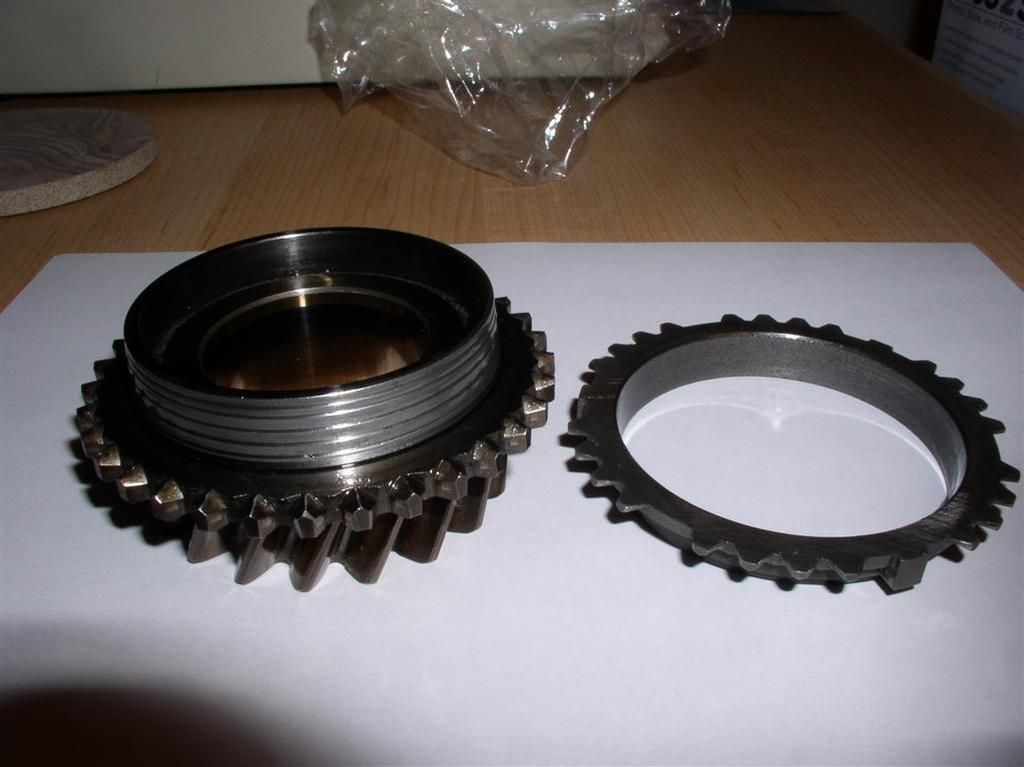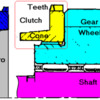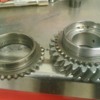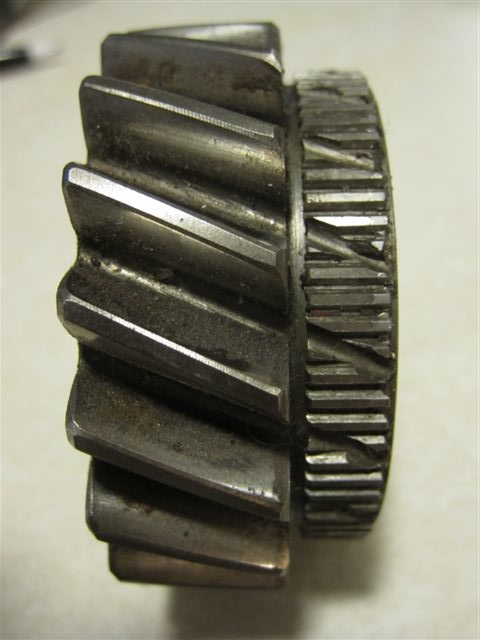I wanted to finally close the loop on my second gear syncro repair.
Based on careful measurements, both manually, and by using the first gear syncro as a "gold standard", we determined that the cone, and not the syncro ring was what was worn.
A second gear (complete set) from RBT is north of $1000. I believe the general recommendation is that you can't just replace the gear with the cone, as the mating gear wear could be significant.
A second gear syncro is north of $300 from RBT. There are rumours of brass syncros for $150, but I heard they don't last long.
Based on a recommendation from this forum, I found a fabrication shop (CRM Fabrication, Gainesville, GA) that has tackled this repair for another forum member, with successful results.
CRM Machine The CRM process is to machine the cone down and fabricate a replacement sleeve out of 01 tool steel, hardened to Rockwell 50. Once the replacement cone was fabricated, it was installed using an interference fit with remaining material on the second gear cone.
Once the new cone was attached, the new cone and old synchro were lapped in on a lathe at 90 RPM.
The new gear/synchro clearance is now back to 49 thousandths clearance and works beautifully.
Although the job was not cheap, it was substantially less than the cost of a new gear set and synchro.
Chris Mullins (proprietor of CRM Machine) is an incredible machinist and a brilliant guy. The phone # to his shop is (770) 983-7151.
I took my car out today, and it is GREAT to have a second gear that I can upshift and downshift without having to baby.
I am thrilled with the results, and I am very happy with the cost vs. the traditional repair process (new gear set and syncro).
I am not trying to cut RBT out, and I certainly owe him thanks for the advice (and parts I purchased) from him, but I think there is always room for alternate solutions.
OBTW, I am using Red Line MTL 75/90 as Doug recommended.... Maybe that's what really did it?
Or was it More Cowbell? 